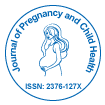当社グループは 3,000 以上の世界的なカンファレンスシリーズ 米国、ヨーロッパ、世界中で毎年イベントが開催されます。 1,000 のより科学的な学会からの支援を受けたアジア および 700 以上の オープン アクセスを発行ジャーナルには 50,000 人以上の著名人が掲載されており、科学者が編集委員として名高い
。オープンアクセスジャーナルはより多くの読者と引用を獲得
700 ジャーナル と 15,000,000 人の読者 各ジャーナルは 25,000 人以上の読者を獲得
インデックス付き
- 索引コペルニクス
- Google スカラー
- アカデミックキー
- レフシーク
- ハムダード大学
- エブスコ アリゾナ州
- OCLC-WorldCat
- パブロン
- ジュネーブ医学教育研究財団
- ユーロパブ
- ICMJE
役立つリンク
オープンアクセスジャーナル
このページをシェアする
抽象的な
How Social Constructs and Cultural Practices Erect Barriers to Facility Deliveries in Rural Nigeria: A Review of the Literature
Jerome Aondona Shaguy
Nigeria has the world’s second highest maternal mortality burden. The latest national demographic and health survey put the figures at 576 per 100000. The proximal reasons for this burden are: Hemorrhage, sepsis, obstructed labor and unsafe abortion related complications. Within the last 16 years (circa 2000), with the intervention of the millennium development goals initiative and a return of democratic government to Nigeria, a new regime of advocacy and good governance demand has brightened the spotlight on poor health indicators in general and maternal and child health in particular, in turn making maternal and child issues, high health priorities. Political will has aligned with resources and configured a more robust response to the maternal morbidity and mortality crisis. Improvements have been noted in the South of Nigeria, however in the North, progress is slower and change more jaded. The social and cultural texture of this region plays a distal role in the slow progress noted. More research needs to be undertaken to better understand the role of power gradients, religious beliefs and conditioning, social perceptions and pressure, educational status and transgenerational cultural practices. This systematic review examines the state of knowledge and the extent of gaps.

 English
English  Spanish
Spanish  Chinese
Chinese  Russian
Russian  German
German  French
French  Portuguese
Portuguese  Hindi
Hindi